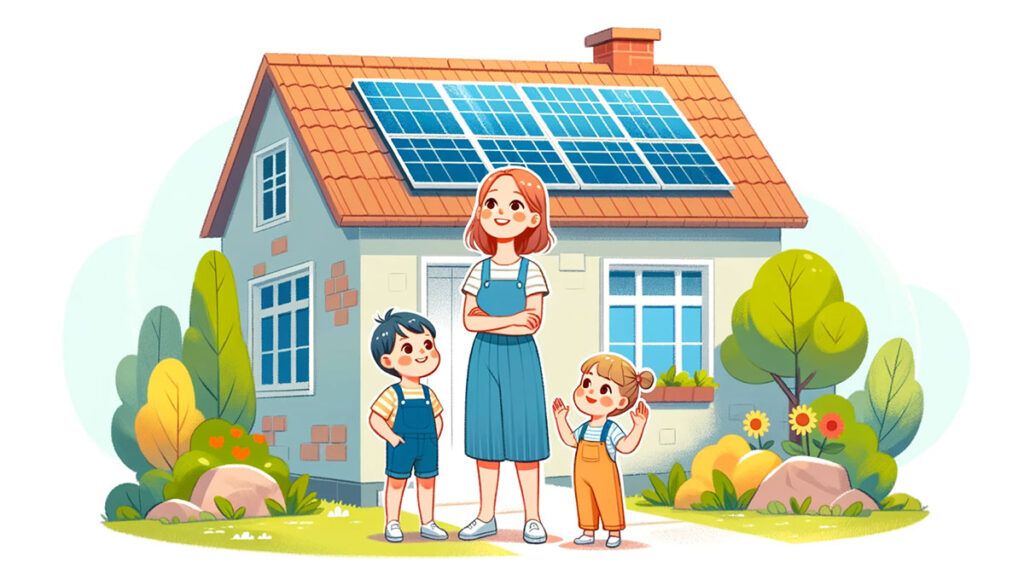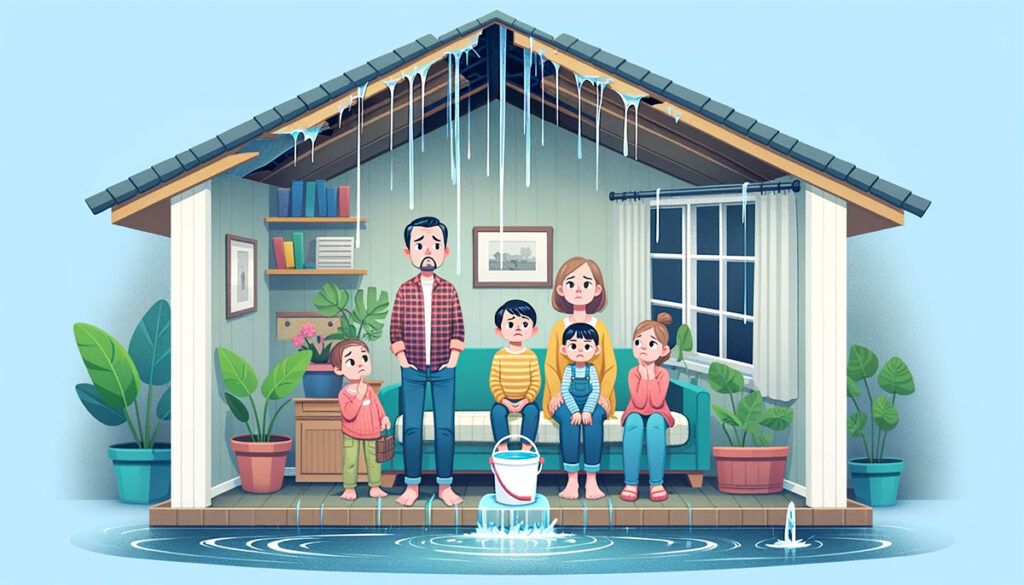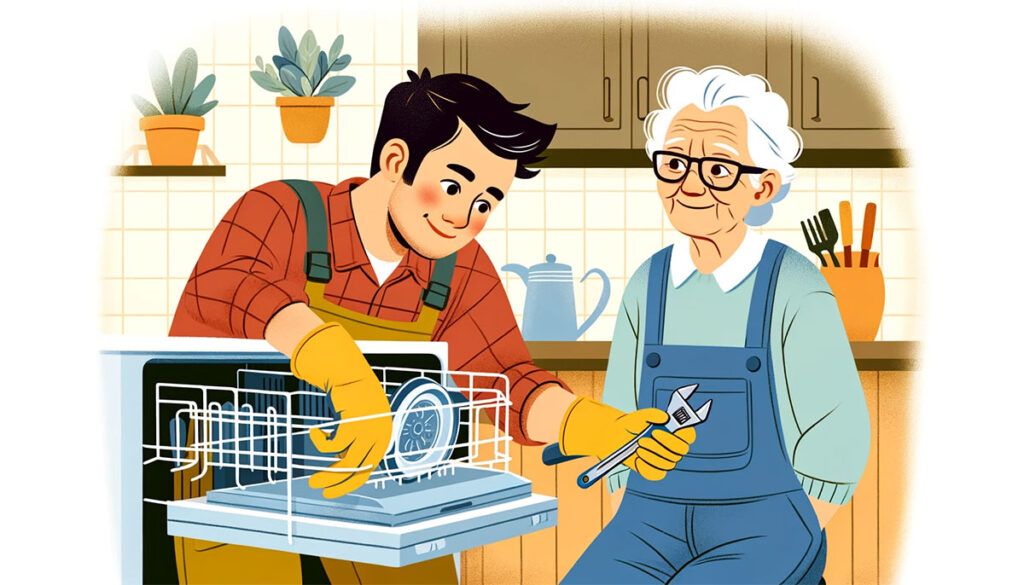What Is NOT Covered By a Home Warranty?

A home warranty plan can offer additional coverage that isn’t included in homeowners insurance, giving homeowners comprehensive protection for their home, their home systems, and their appliances. However, it’s important to consider what’s not covered by a home warranty when determining whether you need one or which home warranty company to choose.
12 Things Not Covered By a Home Warranty
- Septic Systems
- HVAC Systems
- Solar Energy Systems
- Structural Items
- Sewer Lines Outside the Home
- Pest Damage
- Roof Leaks
- Garage Doors and Tracks
- Appliances Under Warranty
- Damage from Natural Events
- Damage from Power Surges
- Any Damage Caused by Homeowner Neglect
What Is a Home Warranty and What Does a Home Warranty Cover?
Think of a home warranty as a backup plan for things that may go wrong in your home but aren’t generally covered by your homeowners insurance policy. Home warranties cover more everyday issues that commonly occur in homes, like clogged pipes, broken-down air conditioning, and kitchen appliances that stop working.
Several companies offer home warranty coverage, like Liberty Home Guard, American Home Shield, Cinch Home Services, and Choice Home Warranty. Although they generally have similar coverages, each company may offer its own add-ons, packages, and policy exclusions.
Homeowners with home warranty coverage pay a monthly premium. When a covered event happens, they can request servicing. The company then sends a professional to the home for a fix or replacement, and the home warranty pays its allowable coverage amount. Homeowners have deductibles for home warranty coverage, similar to homeowners insurance, requiring them to pay their deductible before their home warranty reimbursement kicks in.

Despite a home warranty contract covering several things contained within a home, it excludes other features of a home that are equally as important. When comparing a home warranty vs home insurance, it’s important to remember that home warranty companies generally won’t include anything in a warranty plan that your home insurance usually covers.
What’s NOT Covered By a Home Warranty?
Keeping that in mind, let’s explore the following common exclusions from a home warranty.
1. Septic Systems
Home warranties often exclude items that exist outside of your home. Unfortunately, a septic system is one of those features, so it may be excluded from a warranty plan or available only as optional coverage at an additional cost.
But, even if your entire septic system isn’t covered, many parts of it could be, like a sewer ejector pump or a sump pump. Just be aware that any damage caused by neglect to properly maintain your septic system probably won’t be covered.
2. HVAC Systems
Home warranty companies with home system coverage may include an HVAC system in their coverage plans. If so, they usually come with a list of exclusions, like not covering ductwork, portable heating or cooling units, radiant cable heating systems, and wood-burning components.
When comparing coverage between home warranty providers, be sure to look at the covered components and exclusions for your HVAC system to ensure that you’re getting the most comprehensive coverage possible.
3. Solar Energy Systems

Solar energy systems are not as commonplace as other energy-related home systems yet, so they haven’t made it to the typical list of coverages by home warranty companies. They’re also not considered an actual part of the home because they’re attached to the home, and they aren’t considered necessary to a home’s function, making them less likely to be included in your home warranty plan.
However, a solar energy system can usually be added to your homeowners insurance policy to ensure they’re covered.
4. Structural Items
Your windows, doors, and walls are all considered structural parts of your home, similar to your roof, so they usually are not covered by a home warranty. Therefore, if a neighbor’s baseball comes through your window, you won’t be able to seek coverage from your home warranty company. The good news is that home insurance is available for this type of incident to help you replace damages for covered events, so long as the damage isn’t due to improper maintenance.
5. Sewer Lines Outside the Home
Sewer lines help drain waste from your home, making them an integral part of the home’s overall function. But because they exist outside of your home, sewer lines usually aren’t covered by a home warranty.
Although replacement or extensive repairs to your sewer lines might not be included, some parts of your sewage system could be, like clogs that occur within a certain number of feet from the drain cleanout.
6. Pest Damage
Generally, neither home insurance nor a home warranty policy includes coverage for the costly repairs that a home may need due to pests. Pest control is an important preventative measure to protect your home throughout each season from potential invasions of ants, termites, and other pests. Therefore, home warranties see pest damage as more of a maintenance issue than the unexpected failure or breakdown they usually cover.
Even home warranty companies that do offer additional coverage for pests may not include protection for specific damages, like termite wood damage.
7. Roof Leaks

Your roof is one of the most important parts of your home, so it makes sense that you’d want as much protection for it as possible. However, home warranty plans usually do not cover roof leaks because homeowners insurance provides this coverage.
Some home warranty companies offer additional protection for roof leaks, though, to help you pay for minor roof repairs, like refastening nails or replacing a few shingles that came off. This coverage can usually be added for a few extra dollars per month. However, it won’t help you with your roof if your roof is neglected, like if it experiences water damage from not cleaning gutters routinely.
8. Garage Doors and Tracks
While garage door opener systems are usually part of a home warranty, the actual garage door and its track are not. Optional coverage is sometimes available for these parts of your garage system, but standard plans often only cover the door garage opener and its associated parts.
9. Appliances Under Warranty
Appliance coverage is one of the primary reasons for homeowners to get a home warranty plan. Refrigerators, washers and dryers, dishwashers, and stoves can all be expensive to replace if something goes wrong, making the home warranty cost worth it for appliance coverage.
However, many homeowners may miss the fine details of appliance coverage when signing up for home warranty coverage. In most cases, appliances that are still covered by a manufacturer’s warranty cannot be included in your service contract. Instead, the warranty should cover those appliances.
A home appliance may also not receive coverage if it had a known problem before your home warranty coverage began, which may affect older appliances. Also, you typically can’t tap into your home warranty to cover cosmetic defects that don’t affect the actual function of an appliance.
10. Damage from Natural Events
If your home experiences damage from a storm, earthquake, or other natural event, that damage won’t be covered by your home warranty provider. Instead, this falls within the jurisdiction of your homeowners insurance policy, so you’ll need to file a claim through your insurance company.
11. Damage from Power Surges
Select home warranty policies cover various parts of your electric system, like breaker box issues, hard-wired electrical lines, and electric panels. However, most have exclusions for home generators, lighting, and meter boxes. Also, home warranties generally don’t cover your electric items, like computers or televisions, making them off-limits for repairs if you experience a power surge or power failure in your home.
12. Any Damage Caused by Homeowner Neglect
A home warranty is a blanket of protection for homeowners when parts of their home become damaged or stop functioning unexpectedly. However, it isn’t helpful in cases when a homeowner neglects to complete proper maintenance on their appliances and home systems. Most warranty companies won’t cover anything that becomes damaged or stops working due to homeowner neglect, which is also often the case for homeowners insurance.
Frequently Asked Questions

What Is a Home Warranty?
A home warranty is a service contract that covers repairs and replacements of home systems and appliances. Unlike homeowners insurance, it covers everyday issues like clogged pipes and appliance breakdowns. Homeowners pay a monthly premium and a deductible for servicing.
What Does a Home Warranty Cover?
Home warranties typically cover home systems like plumbing, electrical systems, and appliances such as refrigerators and washing machines. Specific coverage varies by provider, with some offering add-ons and unique exclusions.
What Isn’t Covered By a Home Warranty?
Home warranties often exclude septic systems, HVAC systems, solar energy systems, structural items, external sewer lines, pest damage, roof leaks, garage doors and tracks, appliances under manufacturer’s warranty, natural event damages, power surge damages, and damages due to homeowner neglect.
Are Septic Systems Covered by Home Warranties?
Typically, septic systems are excluded from home warranties as they are outside the home. However, some parts like sewer ejector pumps may be covered. Damage due to neglect is usually not covered.
Do Home Warranties Cover HVAC Systems?
While some home warranties include HVAC systems, they come with exclusions like ductwork and portable units. It’s important to check each provider’s specific coverage and exclusions for HVAC systems.
Are Solar Energy Systems Covered Under Home Warranties?
Solar energy systems are generally not covered by home warranties as they are considered external additions to the home. However, they can be added to homeowners insurance policies.
Does a Home Warranty Cover Structural Items Like Windows and Doors?
No, structural items such as windows, doors, and walls are usually not covered under home warranties. Damage to these should be covered by homeowners insurance.
Are Pest Damages Covered by Home Warranties?
Pest damages are not covered by home warranties or home insurance as they are considered a maintenance issue. Homeowners are advised to use preventative pest control measures.
Do Home Warranties Cover Appliances That Are Still Under Manufacturer’s Warranty?
No, appliances under a manufacturer’s warranty are typically not covered by home warranties. Home warranties cover appliances that are no longer under the manufacturer’s warranty.
How To Find the Best Home Warranty Coverage

Finding the best home warranty companies and coverages for your home is just as important as choosing the best homeowners insurance company. Some home warranty companies offer more comprehensive coverage for home systems and appliances than others, potentially for even lower premiums.
Get a free quote from each company you’re interested in on their website or by calling customer service. Some websites let you see quotes for their various policy options, allowing you to customize your coverage for your home. Be sure to view a sample policy, if available, to see the company’s complete list of exclusions. Sample policies list everything that will be included and excluded on your policy, along with coverage limits for each category.
Finally, consider whether you need to use the company’s service contractor network or are allowed to enlist the help of a contractor you know to make covered repairs or replacements. If you already have a trusted contractor, you may not want to choose a company that limits you to their partnered contractors.